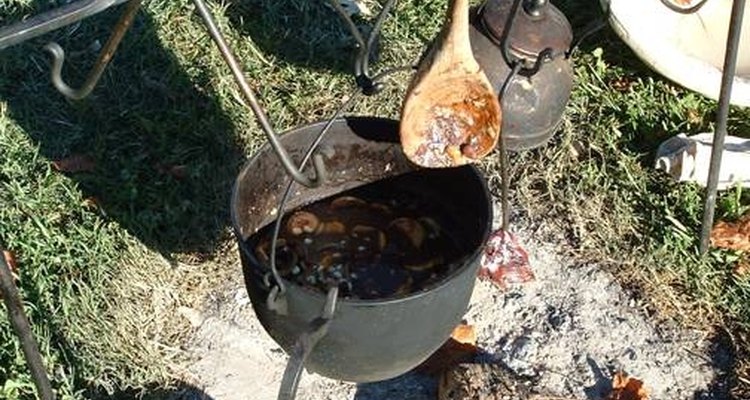
Radiant heat is heat that is transferred directly from a heat source to an object, as opposed to through the air, like convection, or through a solid, like conduction. When you stand outside, exposed, and feel the heat of the sun, you are feeling radiant heat because it is coming directly from the heat source. In cooking, examples of radiant heat include cooking on a hearth, grilling, broiling, gas and electric ranges, and reflector ovens where the sun's heat is reflected and concentrated on what you're cooking. The example here provides a guideline on how to cook with any form of radiant heat.
Turn your heat on and preheat your skillet. Radiant heat gets hot very quickly, moreso than most other cooking methods, so pay attention to your heat source.
Check your skillet's temperature. Most radiant heat sources don't tell you exactly how hot they are, so use intuitive methods to test temperatures: sprinkle a few droplets of water onto the skillet's surface; if the droplets just sizzle very lightly, heat the skillet more, and if they totally and immediately evaporate, take it off or lower the heat to let it cool. If the skillet is at the right temperature, the water should bead up, dance and hop around for several seconds.
Add a couple teaspoons of oil to your pan if it isn't nonstick. On radiant heat, your oil will heat up very quickly and should need only a minute to become hot enough to sauté with.
Add your eggs or onions. Watch how quickly they cook. If they are cooking too quickly, simply lower the heat or move the skillet away from the heat for a moment; radiant heat is directly proportionate to how close your cooking utensil---the skillet in this case---is to your heating element.
Remove your skillet just before your food looks fully cooked. Radiant heat will heat your cooking utensil to the point that it will continue cooking its contents for a short time even after it's removed from the heat, and the food will finish cooking in the hot skillet (through conduction now, not radiant heat, since the skillet, while hot, is not actually producing its own heat). The better the heat conductor (cast iron, copper-laced stainless steel, etc.), the longer your utensil will retain heat.
Related Articles
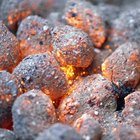
How Does Infrared Cooking Work?

What Is the Best Cookware for Electric ...
How to Cook in a Gas Stove or Oven

How to Light a Propane Barbecue Grill

Are Halogen Heat & Infrared Waves Safe ...

How to Cook Steak in a Wok

The Best Types of Pans to Cook ...

How Hot Should a Gas Grill Get?
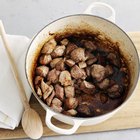
Can Ceramic Cookware Be Used on ...

How to Hot Comb Relaxed Hair

How to Cook Rib Eye Steak in an ...

How to Make Sure That Foods Cook Evenly ...
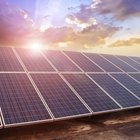
Example of Passive Solar Energy

How to Cook With a Gas Fireplace

How to Use a Probe Cooking Thermometer
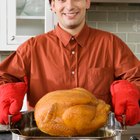
Difference Between a Broiling & ...

How to Use Oil in a Nonstick Pan
How to Heat Up Hot Dog Buns for a Large ...

Why Heat Does Not Transfer Through a ...

What Kind of Pan Can I Use to Cook a ...
Tips
- Although iron, which won't warp when exposed to high heat, is an ideal utensil to use with radiant heat, be careful when using it on ceramic ranges, because iron can scratch your ceramic cooktop if you drag it or drop it.
Warnings
- Once you are done cooking, be careful with your heating element---it was able to cook your food by becoming very hot and will remain hot for a while even after it is turned off or extinguished. Your utensils will become and remain very hot when exposed to radiant heat, and if your utensils' handles tend to get hot, always use pot holders during handling.
Photo Credits
stock.xchng